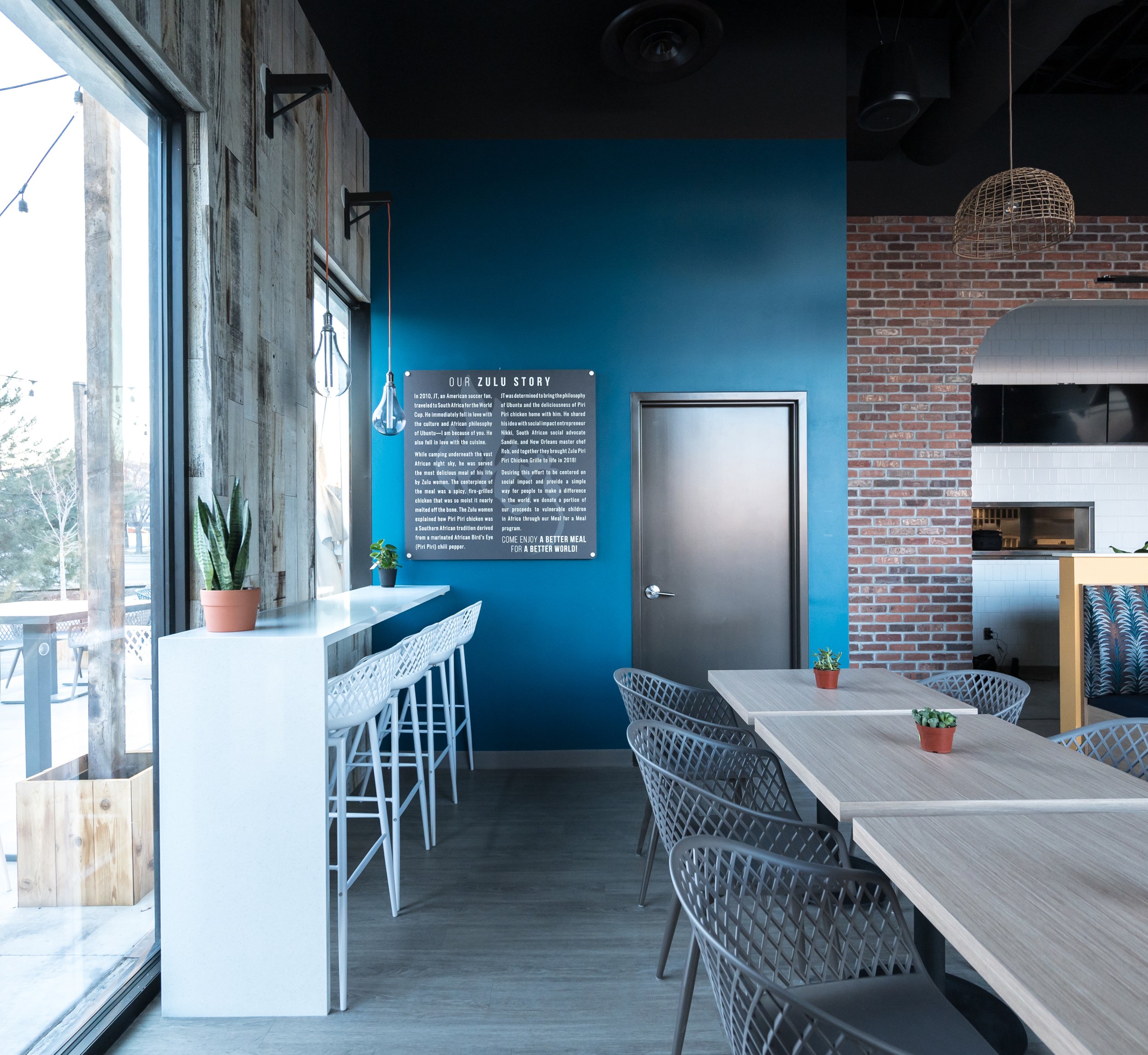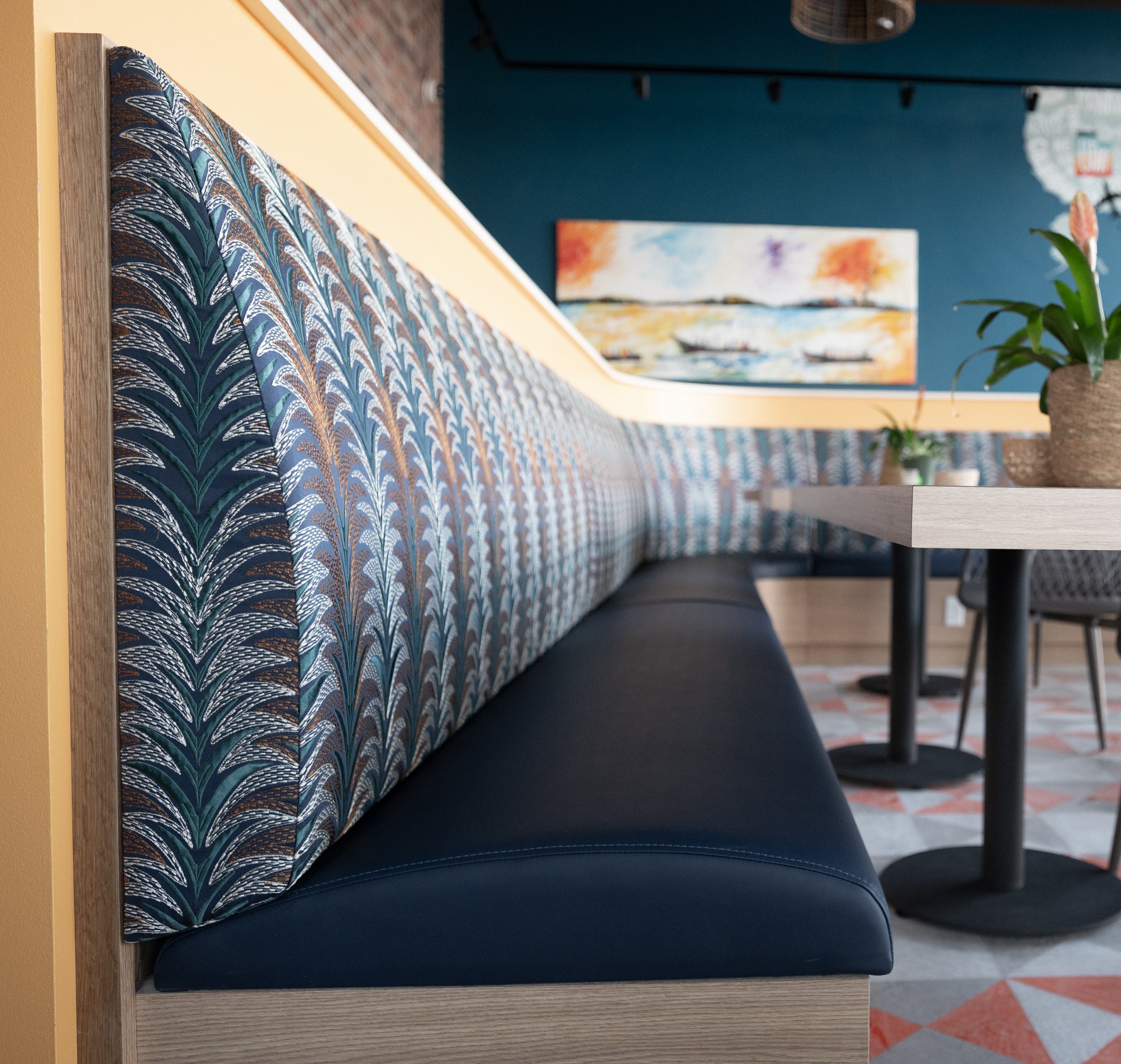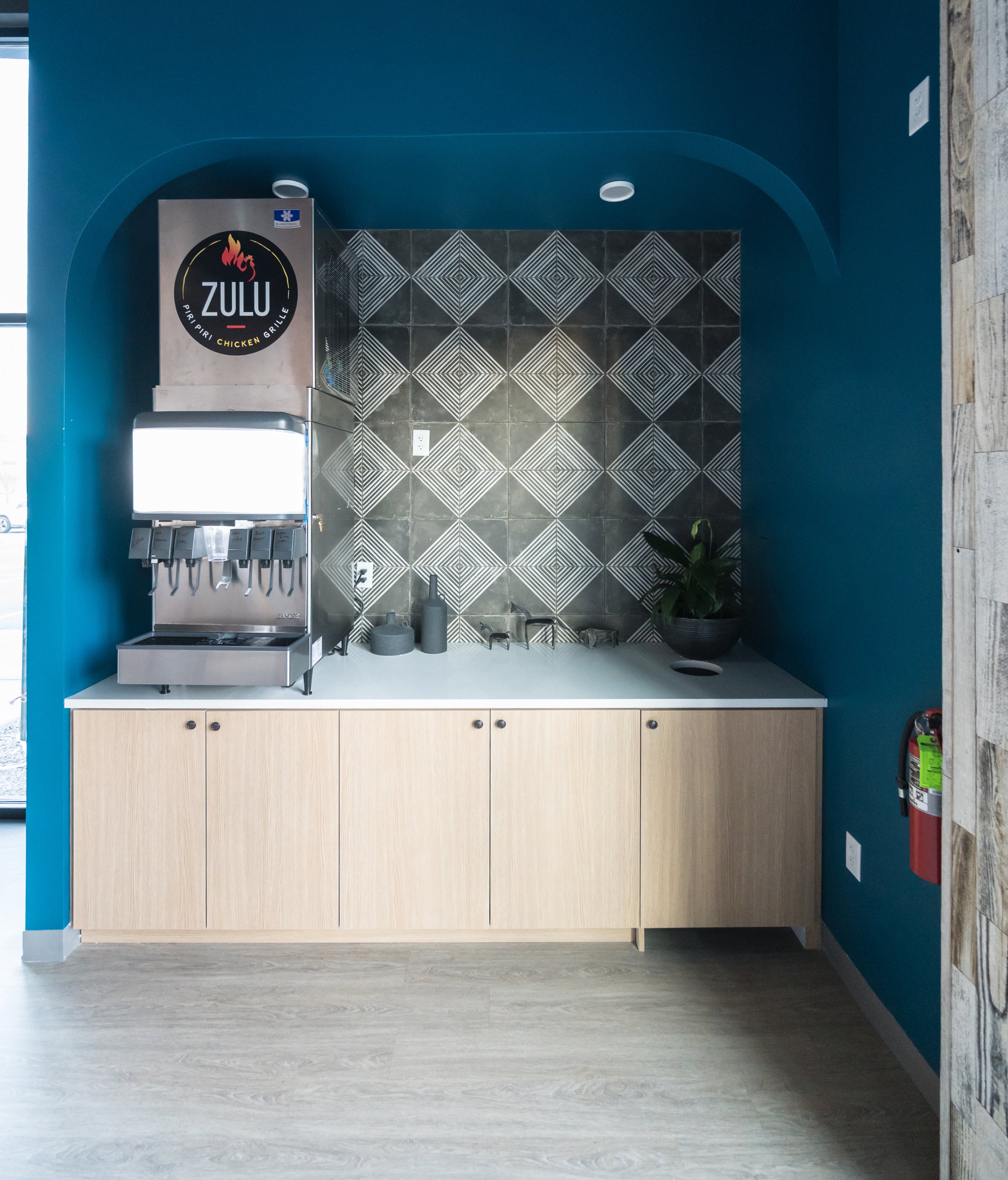THE BEST MATERIALS FOR RESTAURANT DESIGN
Restaurants must be sanitary, safe, and durable, and the materials and finishes used need to meet these requirements. You will need to consider both the main dining space that is visible to the customer and the kitchen and food prep spaces that the staff will use. Whether your restaurant is fine dining, casual dining, or quick service, each material has appropriate options.
ACOUSTICS
In your experience, you may have noticed that fine dining restaurants are quieter, while quick-service dining is louder. Part of this is due to the pace of the service, but a large factor is the materials chosen for the space. Many quick-service spaces have tile, concrete, and metal which lends to easy cleaning, but enhances the noise. Casual or fine dining spaces can have commercial carpet or window coverings that help to alleviate the noise. No matter which type of restaurant you are designing, you can add materials that help with the acoustics. The softer the material, the more sound absorbent it will be. (This also means it will be more porous and harder to clean, so you will have to be smart about where it is located.) Consider adding acoustic tiles to the ceiling in wood, cork, or felt. Wood or fabric-covered wall panels, padded booths and chairs are other solutions.
FLOORING
Choose a flooring that will be easy to clean and durable. Tile is very durable, carpet is soft underfoot and dampens noise, and vinyl is easy to clean with its lack of grout lines. Sealed concrete is a popular option for kitchens and quick-service dining rooms. You will have to weigh these factors to determine which is the most important in your space. For example, if you expect higher volumes of foot traffic, like in a quick-service restaurant, the biggest priority for you may be how easy the floor is to clean and sanitize.
COUNTERTOPS
In the kitchen, stainless steel is a great choice. They are non-porous, bacteria-resistant, heat-resistant, and will not stain from food acids. Two drawbacks are that they are loud and susceptible to scratches. In the main dining area, laminate or butcher block counters are great as a cost-effective solution, but they will swell when in contact with water, so they will need to be kept out of high-moisture areas. Quartz and porcelain are great options because they are non-porous and imitate marble in their beauty. Keep in mind that porcelain is heat-resistant while quartz is not. While it is low maintenance, porcelain will be an added cost to the budget.
In each case, consider the aesthetic of your space and what will fit best. No matter the type of restaurant, there will be a flooring, counter, or acoustic solution that matches the style. And most importantly, work with your designer and builder to ensure your restaurant meets all applicable codes.
XOXO,
Holly Mickelsen



